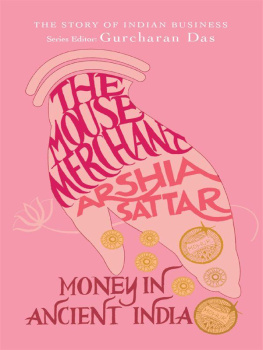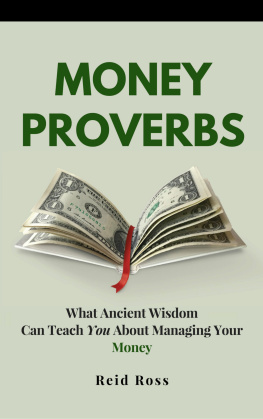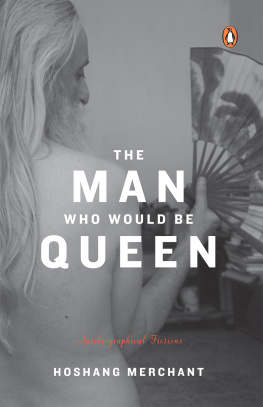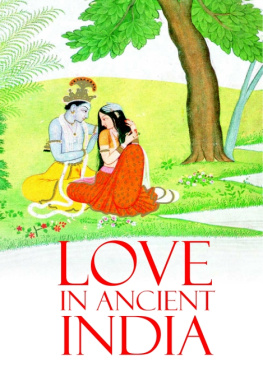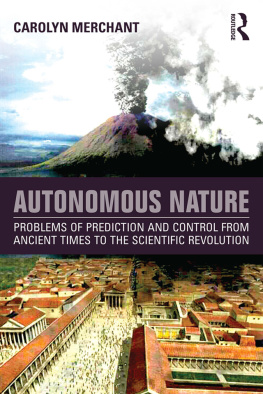Foreword
MOST CULTURES HAVE looked down on the making of money. This isnt surprising as moneymaking emerged from within settled agricultural communities whose material life was relentlessly cyclical. Any change in the seasons of planting and harvesting threatened survival. Hence, people tended to be conservative, and suspicious of change and of anyone different, especially an outsider. The merchant was especially distrusted because his life entailed something newtravel, risk-taking and innovation. People marvelled at the novelty of his life, combined with envy at his ability to grow rich beyond measure without producing anything tangible or having to toil under the sun. Not surprisingly, his wealth was not matched by social acceptance until recent times. No wonder the merchant has been a subversive figure in history.
Set against this background, Arshia Sattars marvellous book is like a fresh breeze. She has translated Sanskrit stories from ancient and medieval India, which offer a nice corrective to the universal prejudice against the merchant. They present a profoundly human and usually sympathetic picture of his trade. Our merchant heroes are sometimes gullible, sometimes greedy; at moments ingenious, but dim-witted at others; and hopelessly in love with courtesans but also loyal to their wives. There are honest and dishonest merchants; extravagant and ascetic ones. Above all, the merchant is a full-blooded person with agency; not the stereotype of prejudice to whom even the great William Shakespeare succumbed in The Merchant of Venice.
Most of these stories unabashedly celebrate money. To have money is to have life, proclaims Sanudasa, when he discovers the pearls he had hidden in the topknot of his hair before he was shipwrecked. In the Panchatantra, there is a remarkable conversation among four brahmin friends in which the unanimous conclusion emerges: Let the sole aim be, of men of sense to make money.
In another account from the same text, even the corpse seems to prefer death to poverty. A man is better dead than poor, is the corpses silent answer to a destitute, weary man. Further on, the text teaches us that wealth can be acquired in six ways, as follows: by begging, serving kings, farming, teaching, moneylending and trade. After reviewing the pros and cons of each alternative, it is concluded that trade is best suited for the acquisition of wealth because it provides the maximum autonomy to an individual.
Despite this uninhibited praise for money and trade, Indias society was also agricultural and conservative, but it found a rightful place for the trader within the hierarchy of caste and wealth. While it accepted the vaishya as twice-born and of high caste, it placed him in the third station in the social pecking order, behind the brahmin (the priest) and the kshatriya (the landowner, warrior).
Pre-modern India was also one of the greatest storytelling cultures of the world and its stories naturally reflect its values. Arshia Sattar has chosen stories related to artha (wealthor material well-being), which is one of the four classical aims of the Hindu life. Not only do her stories reveal Indian societys attitude to the merchant but also the merchants attitude to money. While entertaining us with the romance of the merchants seafaring life, the stories offer great wisdom about money.
The goal of artha, however, quickly hit a wall, against another imperative of life, dharma (moral well-being), the moral dimension of business and political life. Should one unscrupulously pursue wealth and power, or does real success come from ethical conduct? Mostly, the classical goal of dharma seems to trump artha in the storiesthere is a right and a wrong way to make money. But there are other downsides to artha. One of these, as the Panchatantra points out, is what is today called the problem of worklife balance:
A man preoccupied by the need for wealth
Gives up values, forsakes his family,
Abandons his mother and the land of birth,
Leaves his own place disadvantageous,
And quickly goes to foreign place;
What else?
There are always trade-offs in life. While you can make lots of money travelling far and wide, you must be prepared to give up the mundane pleasures of domesticity. The stories bring out other ambiguities of the human conditionthere are no easy answers.
A tradition that celebrates arthamoney is a good thing and everybody wants it, as Arshia Sattar puts italso had to cope with another ideal. Early on in the development of Indian society, from the time of the Upanishads, Buddhism and Jainism, there emerged an ascetic streak. The sannyasi (the renouncer) became a dramatic hero in saffron robes, who posed a challenge to the traditional, secular order and its thinking about the good life. He created ambivalence about money, in particular, and it has continued to the present day. The brahmin, in any case, had always been in two minds about money, but he could not speak out against it as he depended on the wealthy patrons.
The kshatriya had also mainly valued action in war and aristocratic idleness in peace, and scorned the life of daily toil. In recent times, Marxist influences in India have added to the ambivalence. With its antipathy to private property, Marxism tried to convince us that the bourgeois trader was an exploiter. These prejudices came together in the post-Independence generation of Jawaharlal Nehru, who combined the high brahminical with the English upper-class Fabian scorn for money, and institutionalized the most rigid socialist controls over business between 1950 and 1990a period also known as the Licence Raj.
Only after the reforms of 1991 did India begin to lose its hypocritical attitude, and two decades later, it seems to have returned to its ancient uninhibited attitude to wealth and the celebration of artha as a legitimate goal of life. Business schools have mushroomed across the land, and many of the stories that Arshia Sattar has translated could form the basis of entertaining, edifying case material for instruction in classrooms.
The Story of Indian Business
The relationship between commerce and social status is an old question that has been debated ever since commerce first emerged in human history when there was an agricultural surplus. It is also related to the ethical question of the right way to do business, for those whose wealth was righteously acquired were rewarded with reputation and status. It is questions like these that engage the authors of our unique multi-volume history of Indian business.
The Mouse Merchant is the fifth volume in Penguins The Story of Indian Business series. The series seeks to mine great ideas in business and economics that have shaped commerce on the Indian subcontinent, while entertaining us with the romance of the high seas and adventure in the bazaar. Leading contemporary scholars closely examine historical texts, inscriptions and records, and interpret them in a lively, sharp and authoritative manner for the intelligent reader who may have no prior background in the field. Each volume offers an enduring perspective on business enterprise in the past, avoiding the pitfall of simplistically cataloguing a set of lessons for today. The value of the exercise, if we are successful, will be to promote a longer-term sensibility in the reader, which can help to understand the material bases for our present human condition and think sensibly about our economic future. Taken together, the series as a whole celebrates the ideal captured in the Sanskrit word

